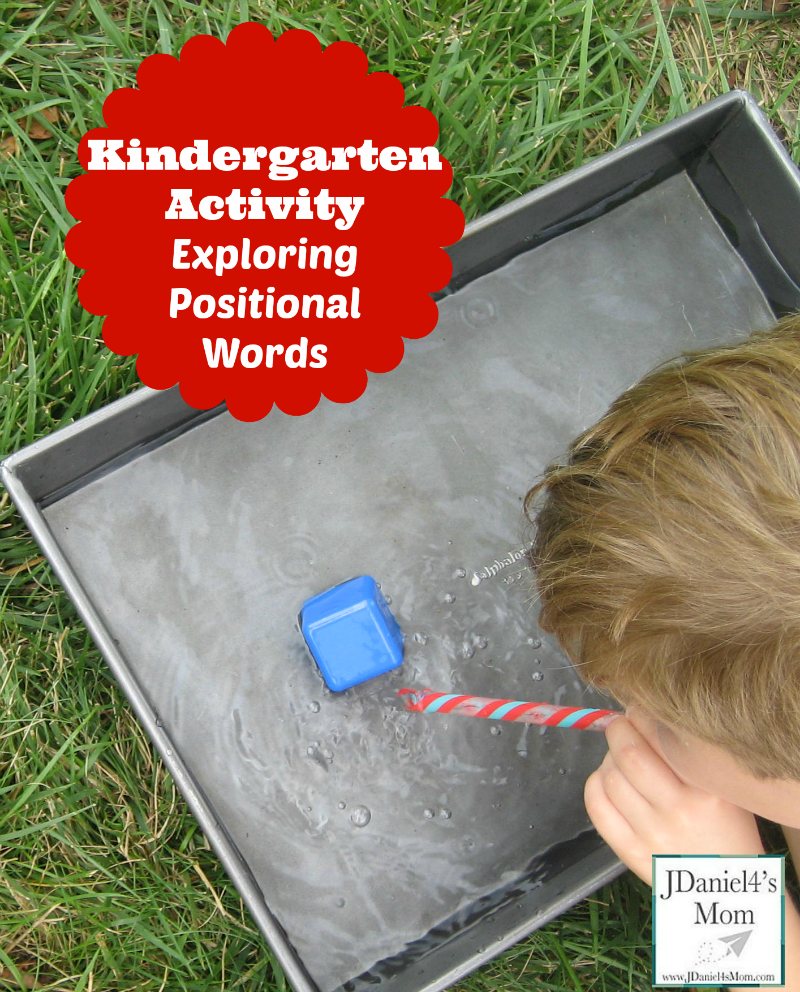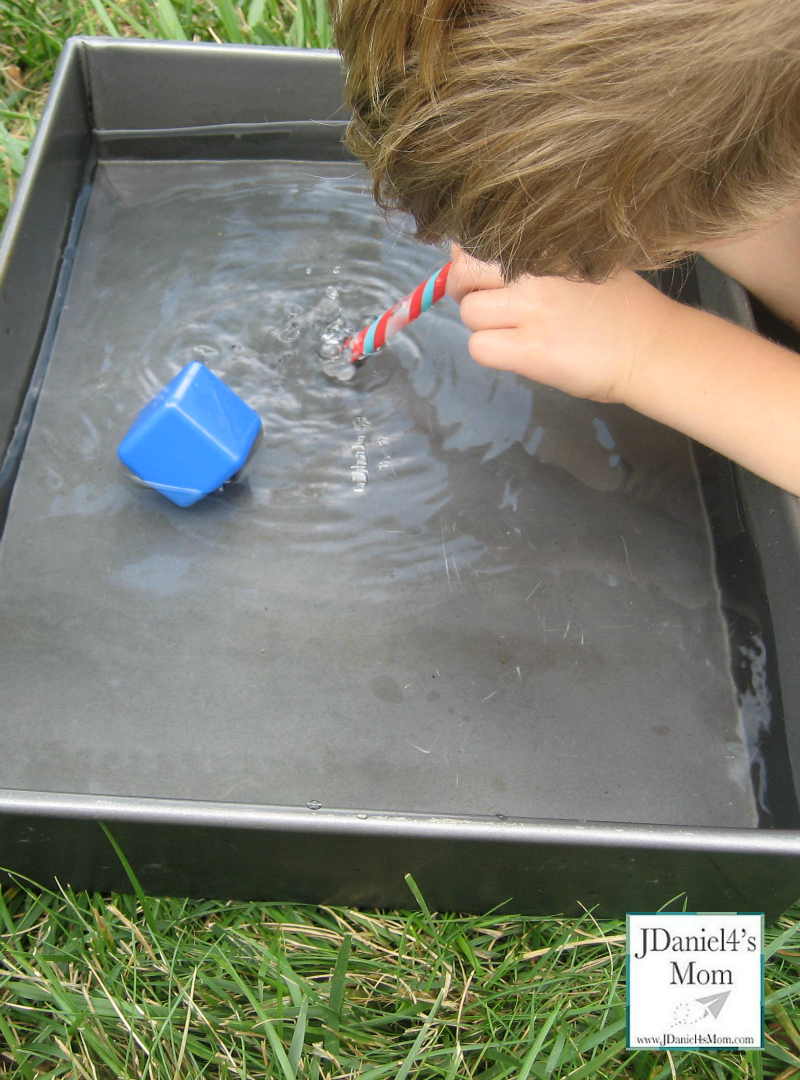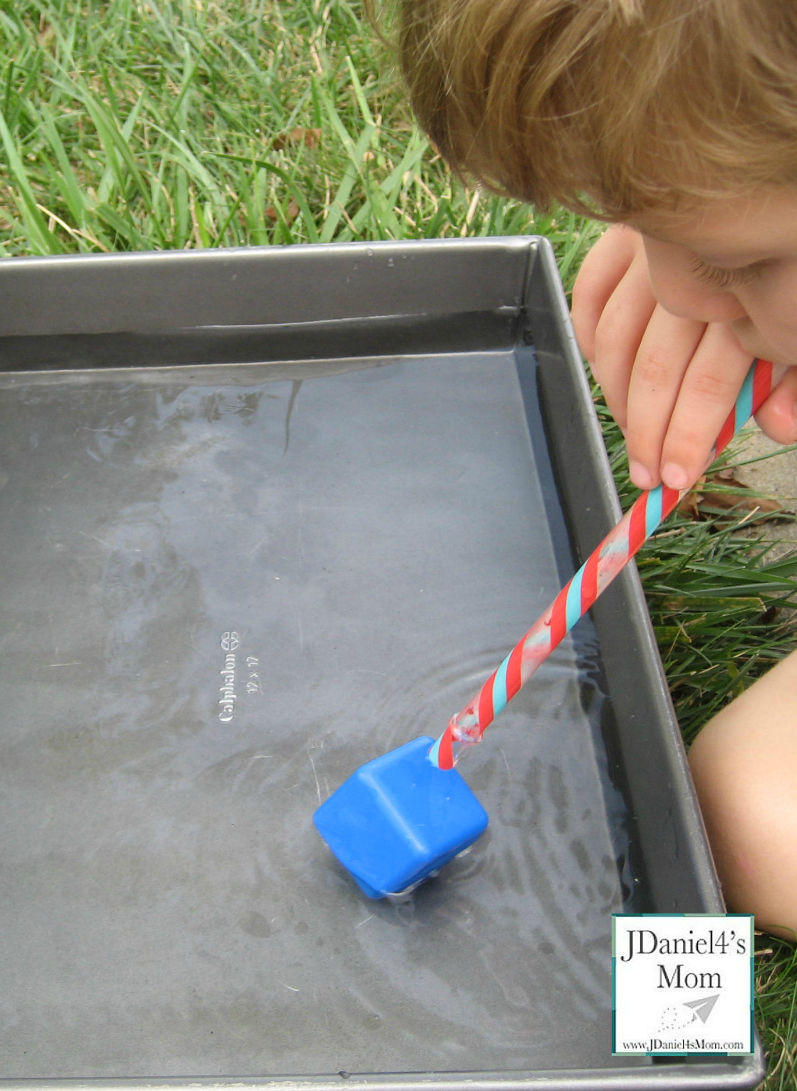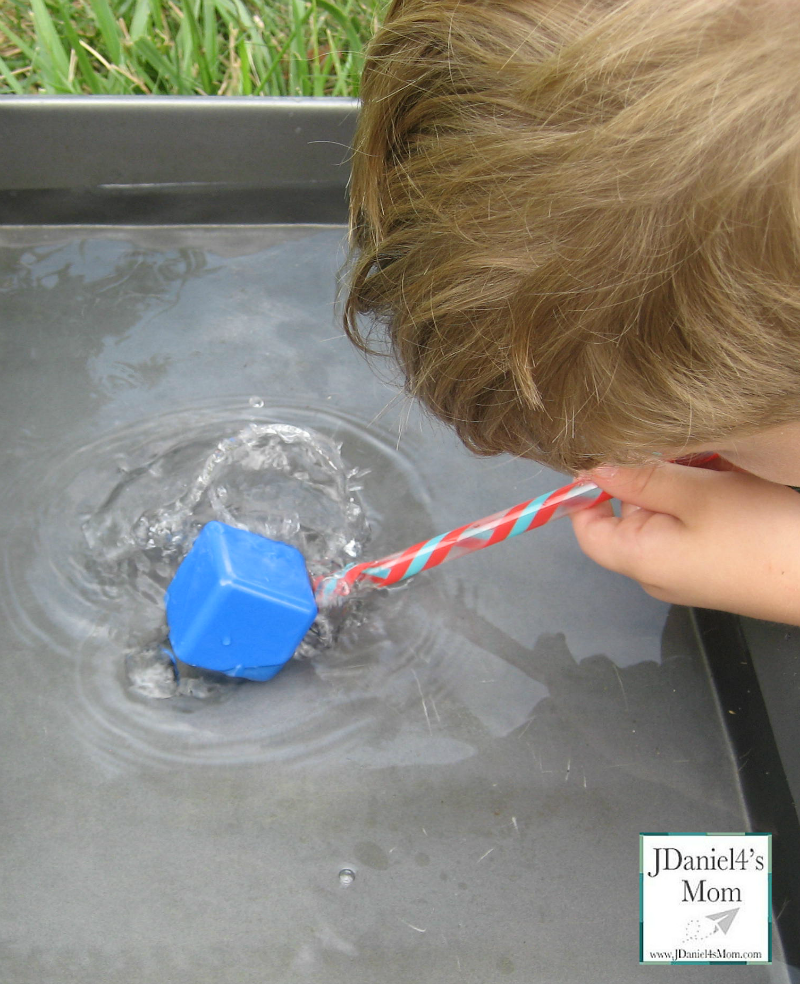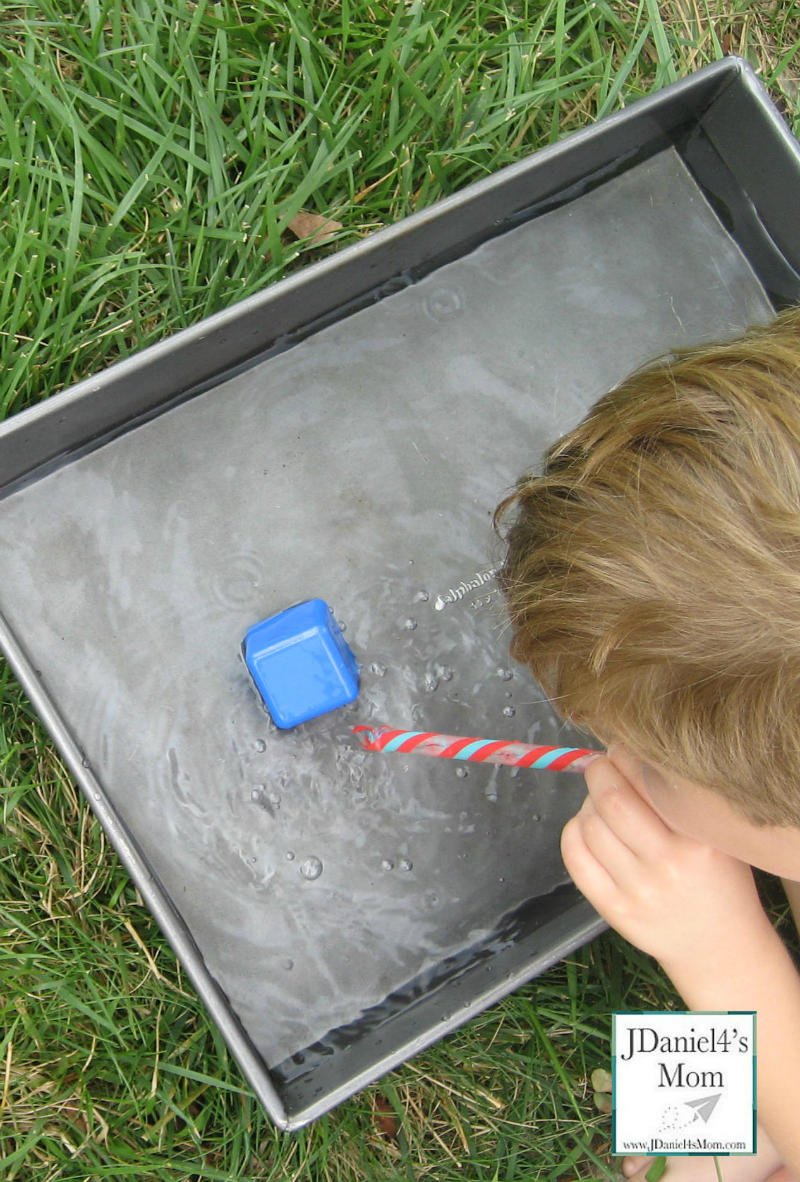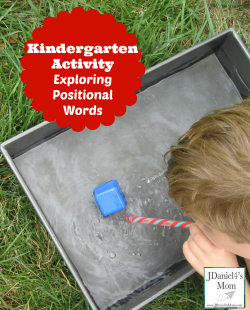 All week long I have been sharing posts on our water science discovery center. There was a post on How to Make Things Sink and How to Make Water Flow. Each of those posts looked at science concepts that many of us explore with kids. You may have seen experiments like them on a number of different blogs. They are exciting and have an awe factor. They help children understand what is science. Some of our experiments or unguided inquiries answered the question “What is science?” and expanded the on concepts we have explored before in quick experiments. I am going to share them with your today.
All week long I have been sharing posts on our water science discovery center. There was a post on How to Make Things Sink and How to Make Water Flow. Each of those posts looked at science concepts that many of us explore with kids. You may have seen experiments like them on a number of different blogs. They are exciting and have an awe factor. They help children understand what is science. Some of our experiments or unguided inquiries answered the question “What is science?” and expanded the on concepts we have explored before in quick experiments. I am going to share them with your today.
Before I share them I want to share with you a definition of “What is science?” from the dictionary and one from kids.
Dictionary
Science is the intellectual and practical activity encompassing the systematic study of the structure and behavior of the physical and natural world through observation and experiment.
Kids
Science is a way to understand the world by carefully thinking about it and testing our guesses.
What is Science? Experiments
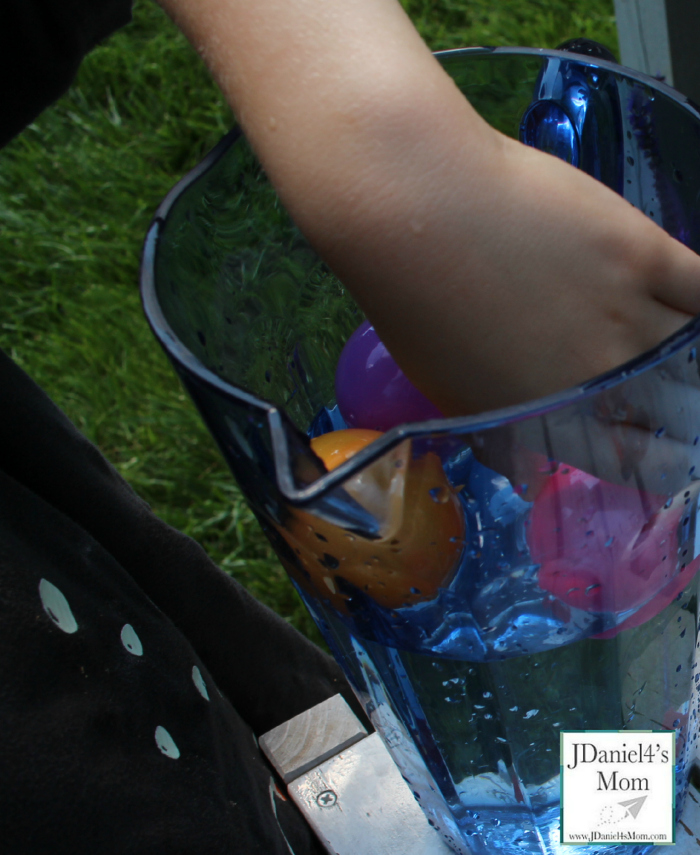
Cork Eggs
When we explored bread tags and corks in a previous experiment, a question was planted in my son’s mind. Corks float in water was known fact. What if the cork is placed in a plastic Easter egg will the egg and cork float?
Facts:
Many plastic Easter eggs have holes on their ends. Those holes will allow water to flow in.
Sometimes the eggs don’t stay closed. They pop open.
With those facts in mind two experiments were conducted. The first experiment featured cork filled eggs placed in a pitcher of water. The eggs were poked with a spoon to see if they would buoy back. They did. Then we waited and watched. Our guess was that they would sink if we gave them enough time. The holes in the eggs were very small. Water wasn’t able to flow into them. Over time they did sink. Over a long time they sank. The weight of the water inside the eggs eventually pulled them down.
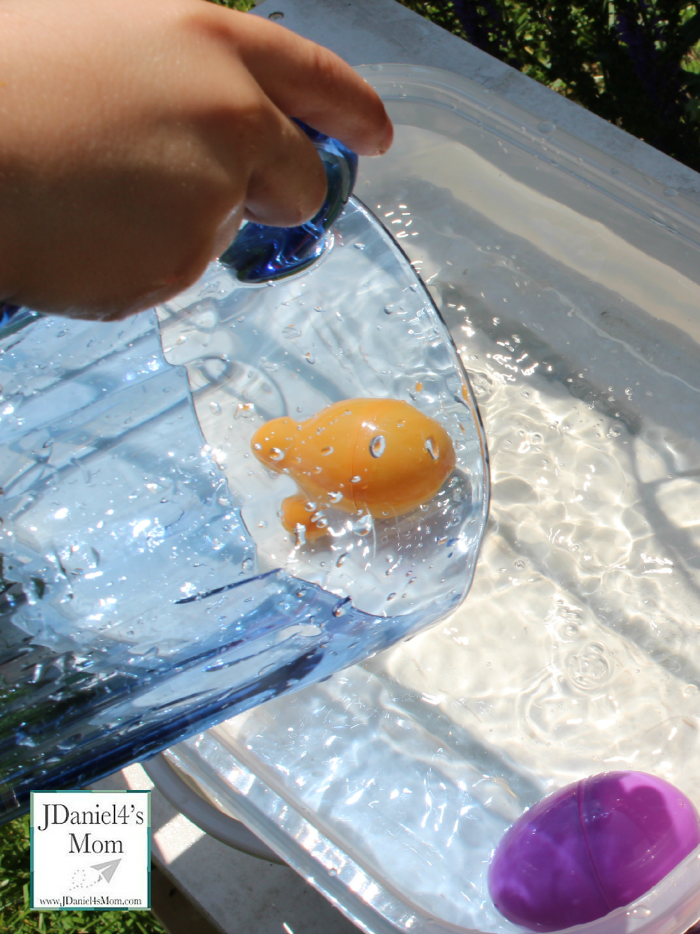
The second experiment took place in a shallow plastic container. The plastic Easter eggs were opened slightly which made the cork visible and let water flow in. The eggs didn’t have very far to sink in the shallow container, but they did sink. The water didn’t have to slip in. It just flowed right on in. Our guess that with a larger opening the water would flow into the eggs and make them sink faster was right.
Smaller Spoon Less Drops
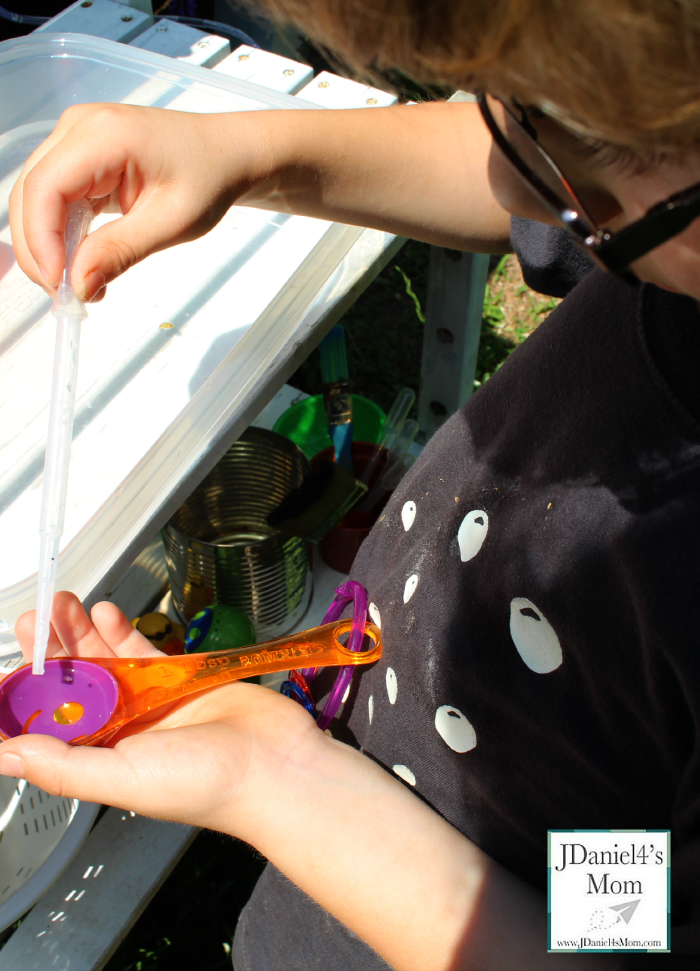
As one might guess when you look at measuring spoons the smaller spoon will hold less water placed in them with a pipette than the larger ones. We decided to see if that was true so, we tested that out.
If a 1/4 of teaspoon held seven generous drops of water, would the 1/2 teaspoon hold fourteen generous drops. That was the next question we explored initially. We ended up exploring if the next size up in our set of measuring spoons would hold double the amount of drops with all of the spoons.
To be honest sometimes they did and sometimes they didn’t. It was hard to control the generosity of the drops being added at times. Sometimes more water was dropped in with a squeeze of the pipette than squeezes added.
We decided our guess was right, but that we needed to be able to control the amount of water dropped in to each spoon.
I love that my son came up with this “What is Science?” and how does it work question. By putting out a variety of science/kitchen tool we were able to explore a lot of science questions and concepts.
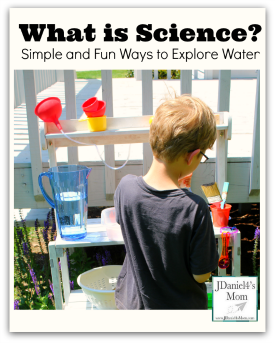
If you try decide to explore the question “What is science?” , please leave me a comment below telling me about how it went or share a picture of your experiment on my Facebook page.







